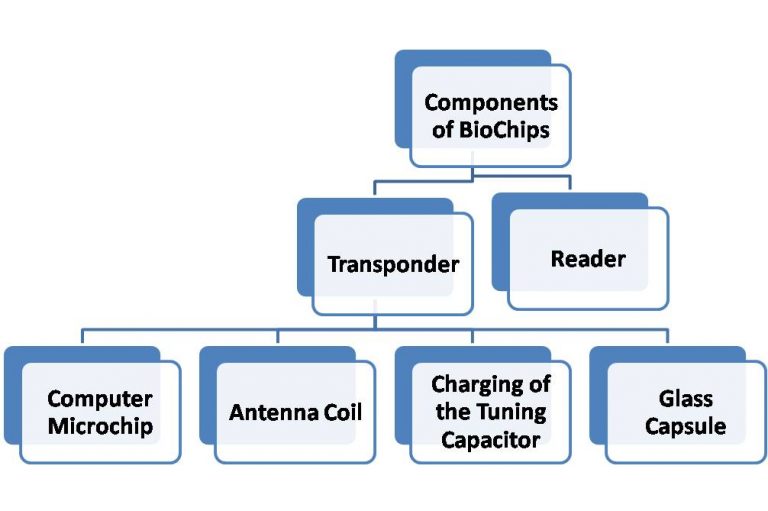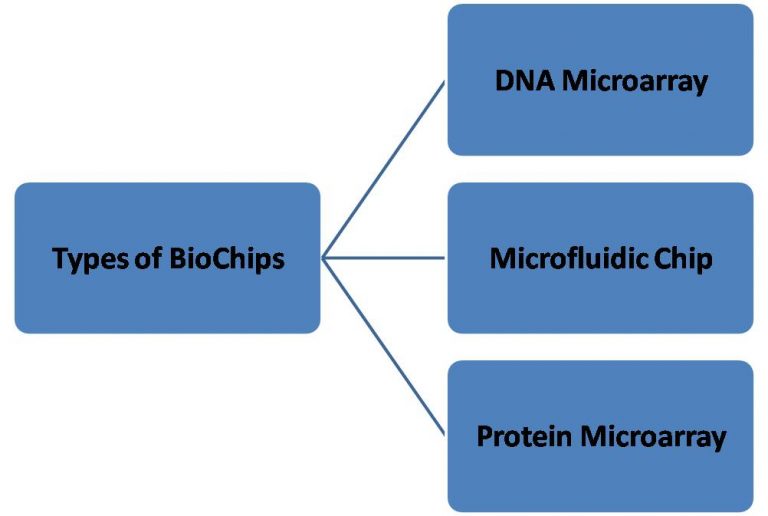We have heard about memory chips, but here we are talking about Bio-chips. Bio-chips are used widely in fields of microbiology, biochemistry, pharmacogenemics, proteology, clinical pathology and DNA analysis. It is miniature version of laboratory. What is it? How it works? Advantages and disadvantages of Bio-chips?
What is Bio-chip?
A bio-chip is a collection of miniaturised microarray (test sites) arranged on a solid substrate that permits many tests to be performed at the same time in order to achieve throughput and speed.
Margaret Rouse (Whatls.com)
Bio-chip is designed in way to be friendly with biological environment, that is living cells. It is not an electronic device. It works in collaboration with many biosensors. The biosensors on biochip acts as micro reactor that helps to detect particular kind of analytes like protein, enzymes, biomolecule and antibody. They are very small in size like a nail on our finger or can compare bio-chip with a rice grain.
Bio-chip is inserted under skin for diagnosis and identification purpose. The bio-chip system is Radio Frequency Identification system (RFID) which uses radio signals or electromagnetic fields to communicate between tagged chip and target site.
Who developed bio-chip?
The idea of development of bio-chip was started since 1980. The first bio-chip was developed by an American company, namely “Affymetrix“. The company named it as GeneChip. It consists of number of DNA sensors to detect the type of defect. Bio-chip invention proceeds on by sensor technology. The development of Bio-chip includes the combination of mainly biochemistry, genetics and molecular biology.
What are the components of bio-chip?

Bio-chip is compromised of two parts, namely transponder and reader :-
Transponder :-
These are of two types, ie. Active and passive transponder. In a bio-chip, passive type is used which require low electrical charge to get activated. Transponder is composed of four parts:-
- Computer microchip – It holds unique ID (identification) number that ranges from 10-15 digits long.
- Antenna coil – It is very small antenna that is used to send and receive the signal from scanner or reader.
- Turning capacitor – It is charged with a very small signal of about 1/1000 Watt sent by the operator.
- Glass capsule – It is outer cover to hold microchip, antenna coil and turning capacitor. It is made up of biocompatible material, mainly of soda lime glass.

Reader :-
Reader have a coil called ‘exciter‘, which forms electromagnetic fields (emf) through radio signals. This is for activating the chip. The reader have a receiving coil that receives transmitted code sent back from the excited implant chip. It also have software to decode the received code and display it on the LED or LCD.
What is the function of Bio-chip?
Bio-chips can perform thousands of biological reactions in a while eg. Decoding of genes. They are loaded with different probes like DNA, RNA and protein fragments which are represented at a point on the chip. Probes are target specific that bind to specific site. Hybrid is formed between probe and target site. Bio-chip have scanner alongwith microarray that scan and analyse software for target identification and signal quantification. Results are obtained on statistical level and are interpreted as biological text.
Types of Bio-chip
There are Three types of bio-chip. They are:-

1. DNA microarray
DNA spots are loaded on a strong surface to calculate the expression level various genes. Each DNA spot are marked as probe. Probe binds at specific target to form hybridization. It is calculated and observed by fluorophore (chemical illuminance) labelled targets, which marks the series of nucleic acid series.
2. Microfluidic array
These are also known as ‘lab-on-a-chip‘ as they are replacement for biochemical laboratories. These are complex chip which many components. They are used in reactions like DNA analysis, molecular biology and clinical pathology.
3. Protein microarray
These are protein chip loaded with protein and trace the activities of proteins. These are automated, rapid, economical, very sensitive and consumes less quantity of samples.
Advantages of bio-chip
- Small in size and powerful in work.
- Faster rate of function.
- Thousands of biological reactions are carried off in a few seconds.
- Helps to find out location of lost people.
- Helps in diagnosis of disease and it’s better treatment.
Disadvantages of bio-chip
- Expensive
- Individual privacy is lost.
- It can con control person’s activities.
Application of bio-chip
- Tracing a person or animal
- Safe E-commerce systems.
- Store and update information of a person
- Restoring data of medical, cash, passport etc.
- Most applicable in medical field as oxygen sensor, detector and BP sensor.
#Read more












































